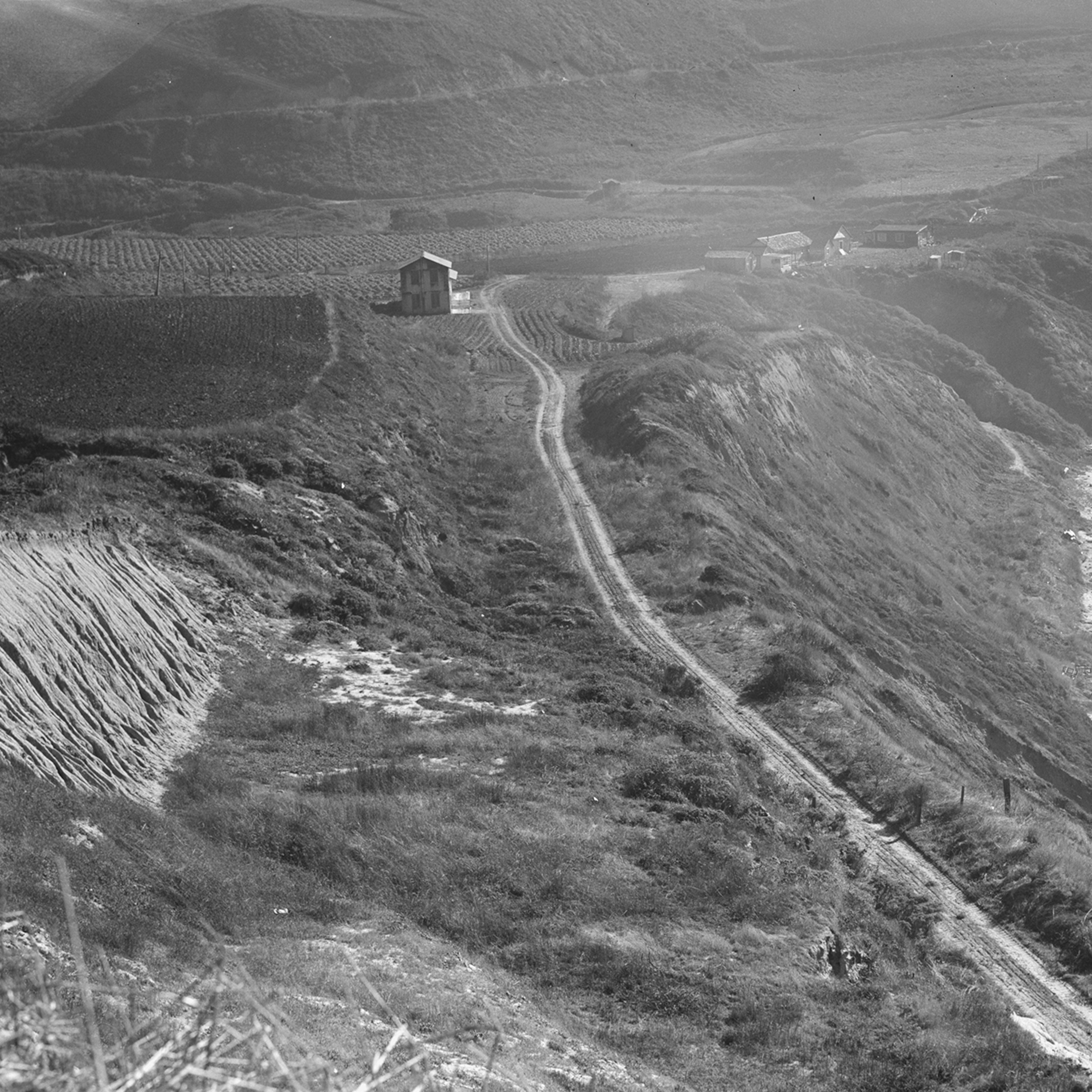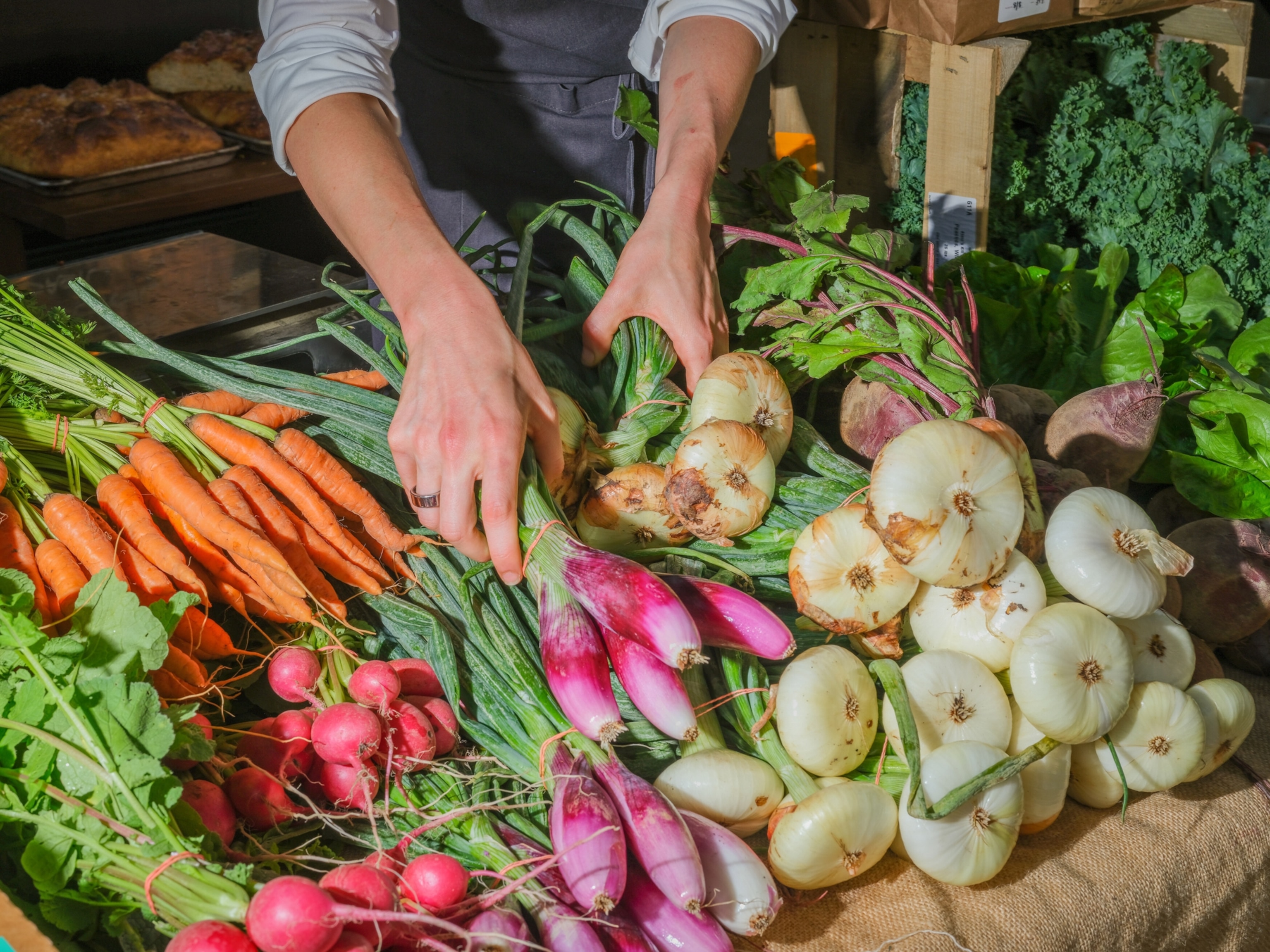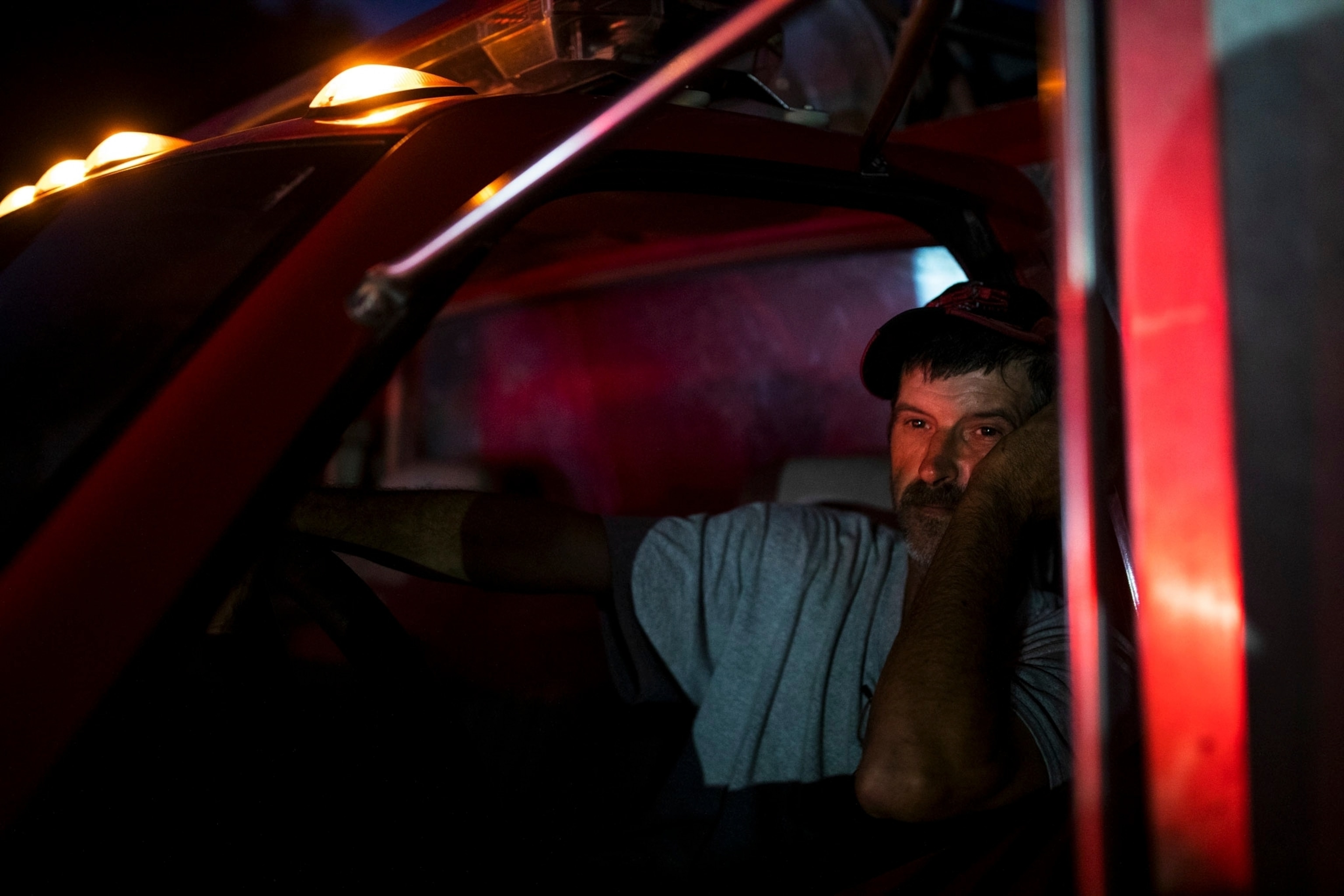
In West Virginia, finding your next meal can be a community effort
“It’s a daily, daily thing on your mind.” In one of the most food insecure regions in the U.S., food is hard to find—even if you can afford it.
From behind the windshield of her white Buick sedan, Amanda Shelton makes eye contact with Jen Lively, who smiles as she climbs down the steps of her single wide mobile home onto a grass and dirt plateau. Shelton smiles back. Beyond the tree line, the forested slopes of Clay County, West Virginia, stretch out like a buckled carpet, creased with narrow valleys and long steep ridges. On the ground are wedges of red oak—fuel for the mobile home’s only source of heat, a wood stove. These were split by Lively’s 18-year-old son, Brian, who is also Shelton’s student at Clay County High School.
"Hey Miss Shelton, what you got for us?" Lively asks.
“Just the normal," Shelton says, stepping out of her car and lifting two cardboard boxes of food from the back seat.
Normal. Right. At the school, where Shelton is a math and special education teacher, a normal October would mean markered whiteboards and crowded football games. But since March Shelton has been doing much of her teaching online, organizing sports events with at least six feet between spectators, and, at least once a week, driving along twisting valley roads and up hollows to deliver boxes of food to families that might otherwise go hungry.
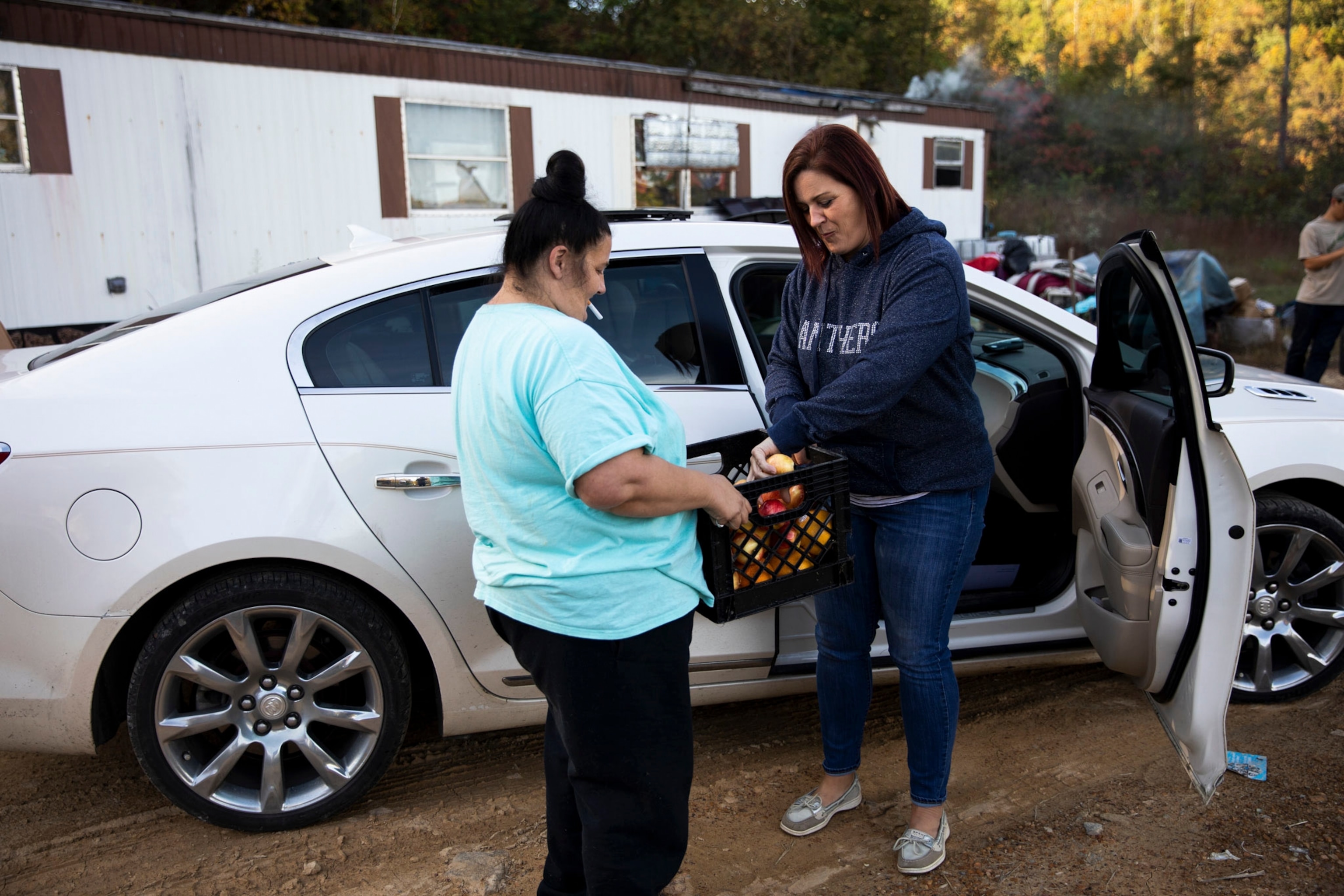
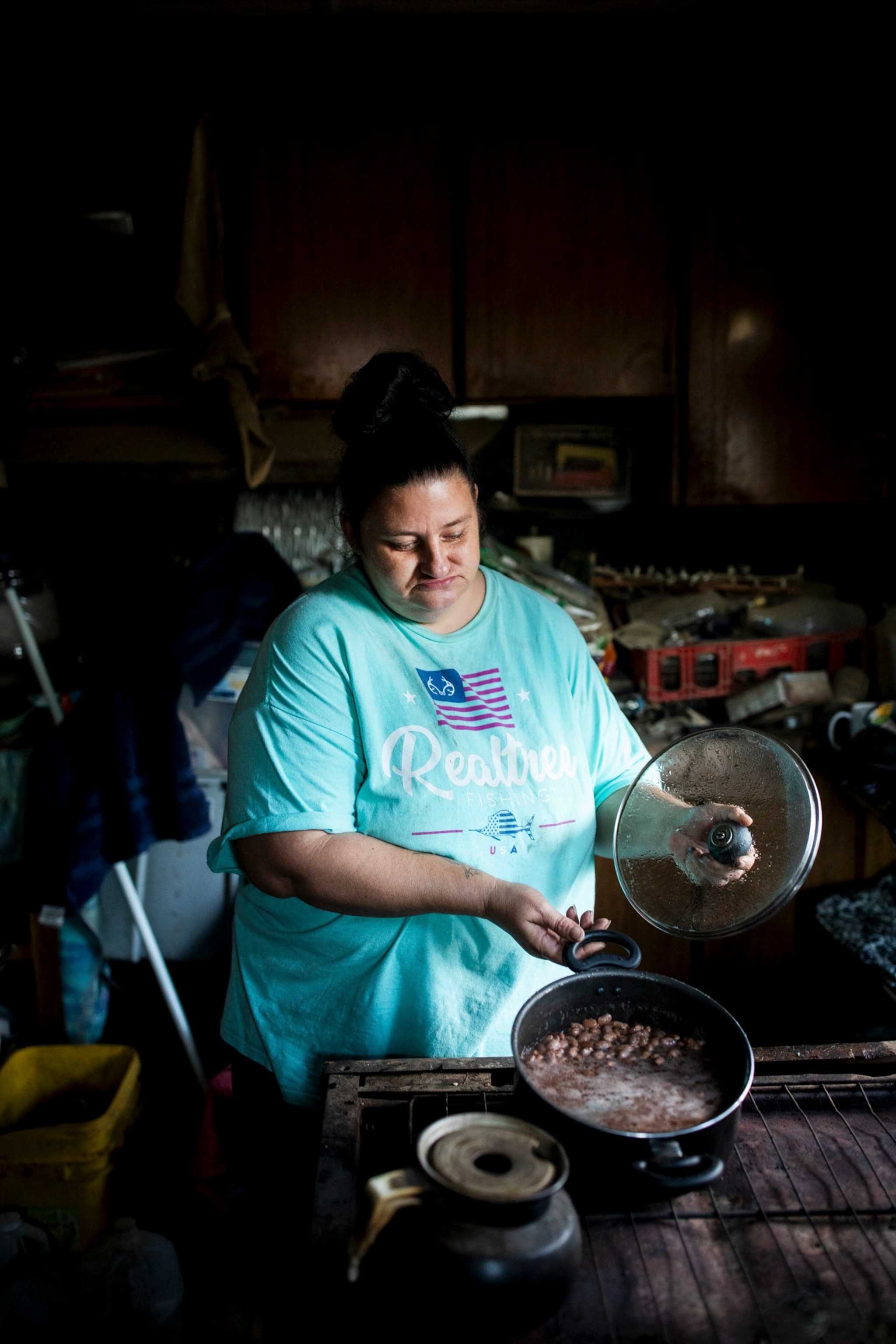
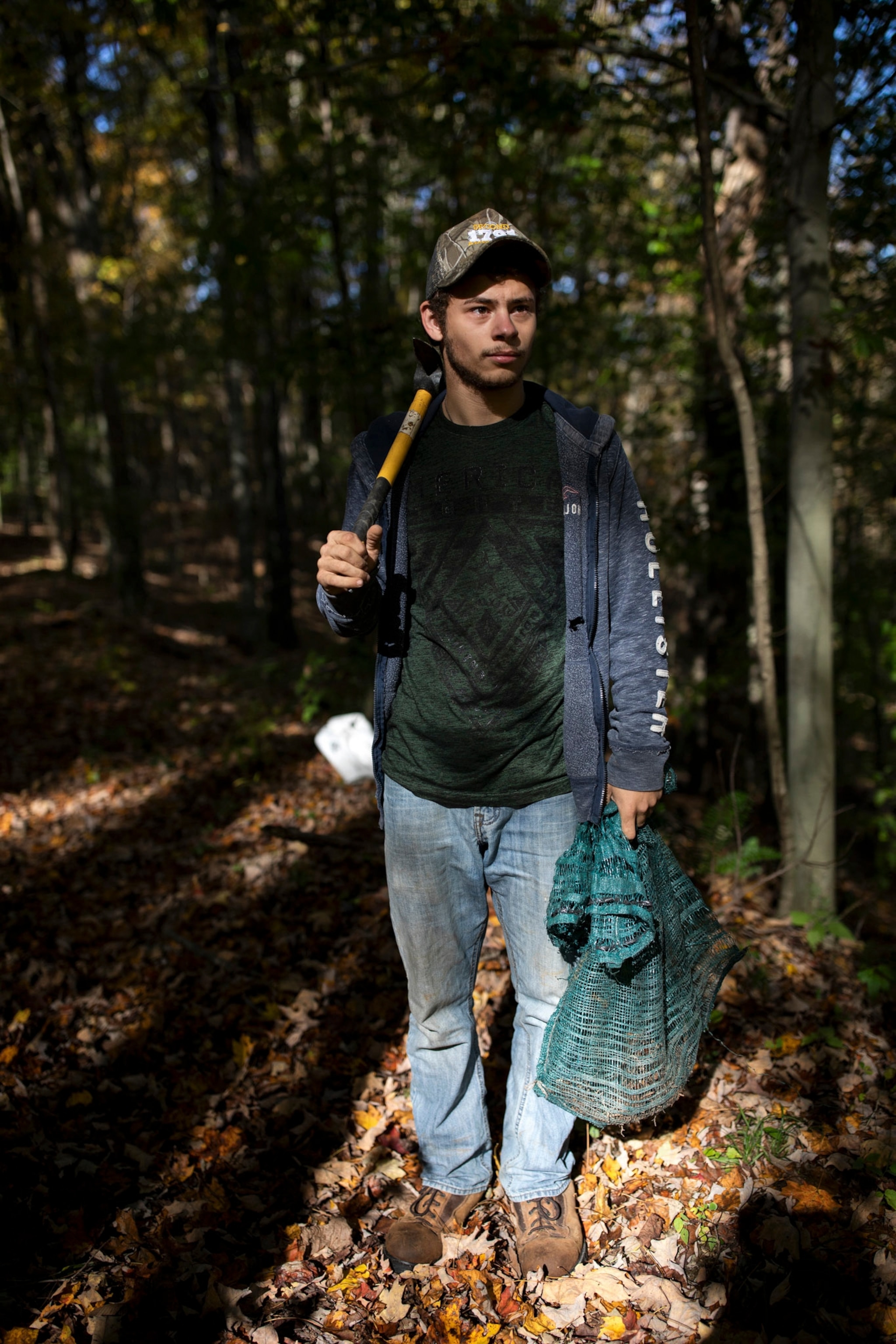

Normally, in Clay, the second-poorest county in West Virginia, every student is offered free breakfast and lunch at the school cafeterias—in some cases dinner as well. But with the schools partially shut by the pandemic, teachers and administrators are in a sustained scramble to get meals to the students and families that need them. For Shelton, in front of her student’s house on a weekday afternoon, two boxes of food in her arms—this is currently, in some way, normal.
"Oh," she says, walking around to the trunk of her car. "I brought ice, by the way."
Lively's face brightens. Her home is off the grid. A solar panel and small generator rigged to a car battery in her living room provide enough power for a lightbulb and a cell phone charge, but not enough for a refrigerator. "Thank God," she says, laughing. "I haven't had a cold drink in two months."
This touches Shelton. She has spent most of her life in Clay, where hardship is all around—some of her students come to school in the same clothes every day, smelling like dirt and tobacco; others have trouble affording school supplies—and she knows the Livelys’ story. Chris, Jen’s husband, worked for more than a decade in Ohio for a waste management company. But his eyes are bad now, and here in West Virginia he can’t find steady work. Jen, who has family roots here, would rather live in West Virginia than anywhere else, but has difficulty standing for long periods of time: arthritic bones, two replaced knees. That makes her culinary arts degree pretty much useless. The two have given up on finding jobs and resort to digging for roots like black cohosh that they can dry and sell for traditional medicinal purposes. When the ground is frozen, they survive on food stamps. Still, they often take in Brian's friends who need a place to stay. For now, it's Alex McBee, a senior at the high school who left his foster home in August. (Demand for ginseng is creating a ‘wild west’ in Appalachia.)
Teachers like Shelton know that a soft heart can be taken advantage of—cash can be as easily used for drugs and alcohol as for food and clothes. The philosophy in Clay is pragmatism, which means assistance comes with the understanding that resources can be abused. But Shelton can’t stop thinking about the cold drink. Two months without one—that’s crazy. So before leaving, she discreetly folds two $20 bills and drops them into a bag of ice. By the time they’re found, she's on her way to another food delivery, halfway down the mountain
West Virginia has the second-lowest median household income in the country, according to the U.S. Census Bureau. In the poorest counties, the average person lives on about a thousand dollars a month. Jobs are scarce and food insecurity abounds. More than a fourth of households in this part of Appalachia rely on Supplemental Nutrition Assistance Program (SNAP) benefits; in some counties, it’s nearly 40 percent. One in every four children lives in a home without consistent access to nutritionally adequate foods
But getting food is not just about being able to afford food. Here, where flat ground is scarce, communities tend to cluster around riverbeds and line hollows. This means many people live miles from even the closest grocery store—in some places, it can be more than a 45-minute drive. Public transportation and delivery services are almost nonexistent, so a working car becomes a costly but near-existential necessity.
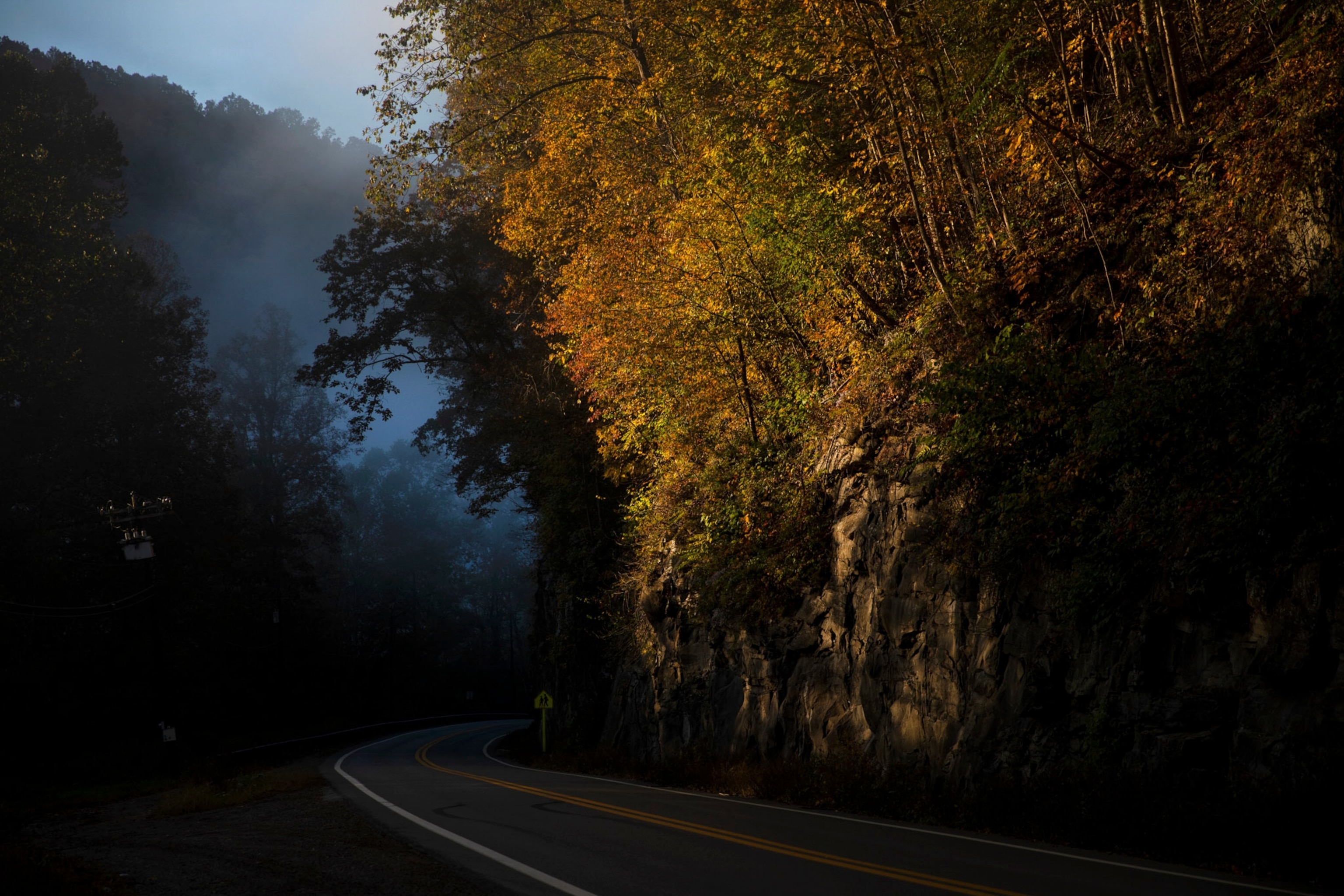
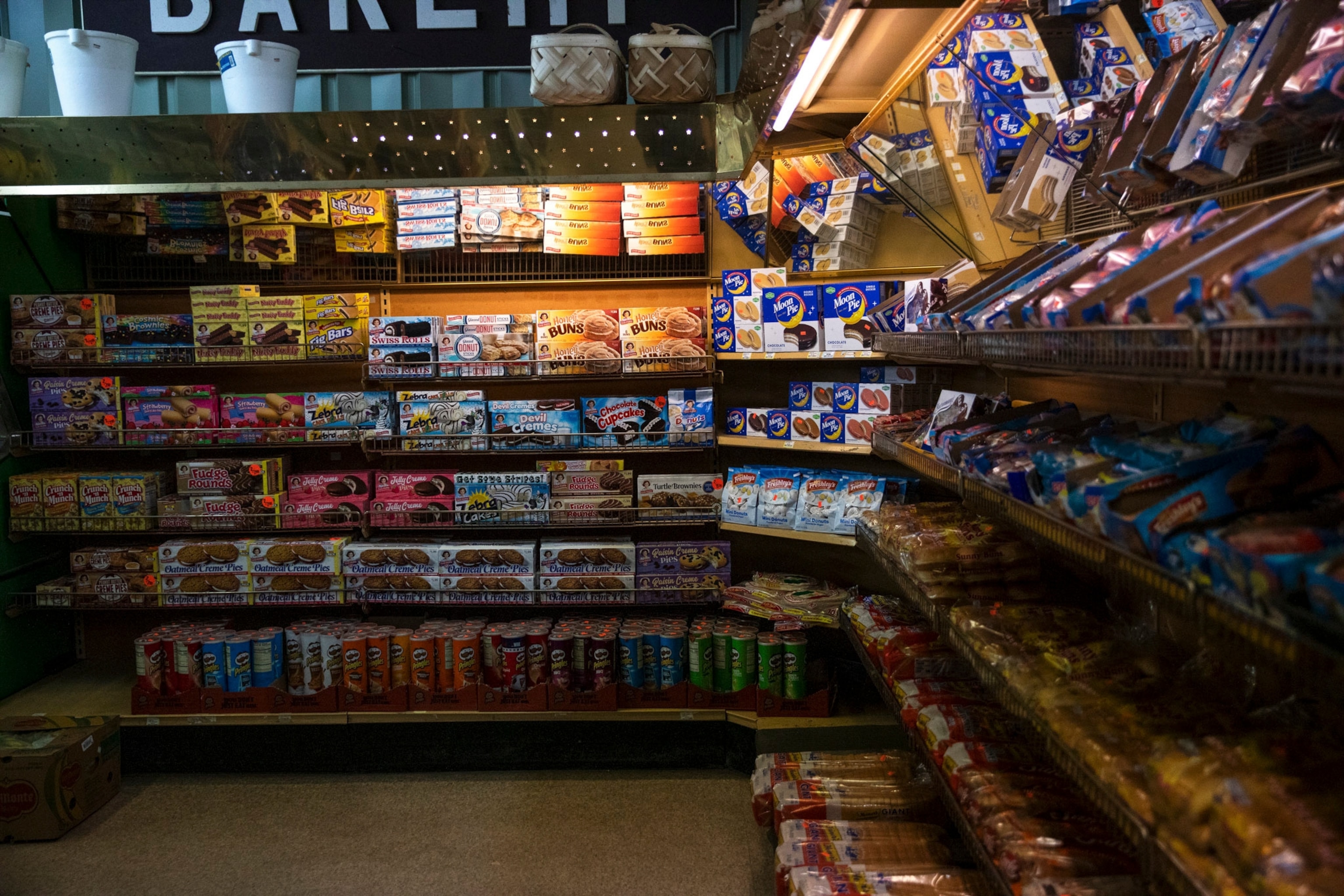

In Clay, a county without a single traffic light or major grocery store, “food is an issue no matter what socioeconomic status you are," says Leslie Osburn, the counselor at Clay County High. "It's a daily thing. A daily, daily thing on your mind." (One in six Americans could go hungry in 2020 as pandemic persists.)
Osburn is considering the best way to get in touch with a family of six that recently moved into a one-room mobile home nearby. A school bus driver had noticed the run-down state of the structure and word reached Osburn, who now stands in her homey office with two employees of the national nonprofit United Way, talking about whether the father will be put off if strangers show up at his doorstep with water, clothes, and boxes of food, promising to “help.”
Osburn has his number, so she calls him. No answer.
"Well," she says, "I think we'll just head over there."
This is how Clay County deliveries often begin. A request for help will start with a friend, neighbor, cousin, caregiver—anyone, really—and, inevitably, make its way to school employees. The whole scaffolding of anti-hunger programs in Clay, and in much of Appalachia, is built upon the relationships among those who live there, most of whom know what it feels like to worry about the next meal. United Way and regional groups provide funding for assistance programs—things like monthly food giveaways and weekend meal initiatives—but they would be quite ineffective without what Osburn calls the “special sense” of the school system, which serves as the connective tissue between people in need and the resources out there to help.
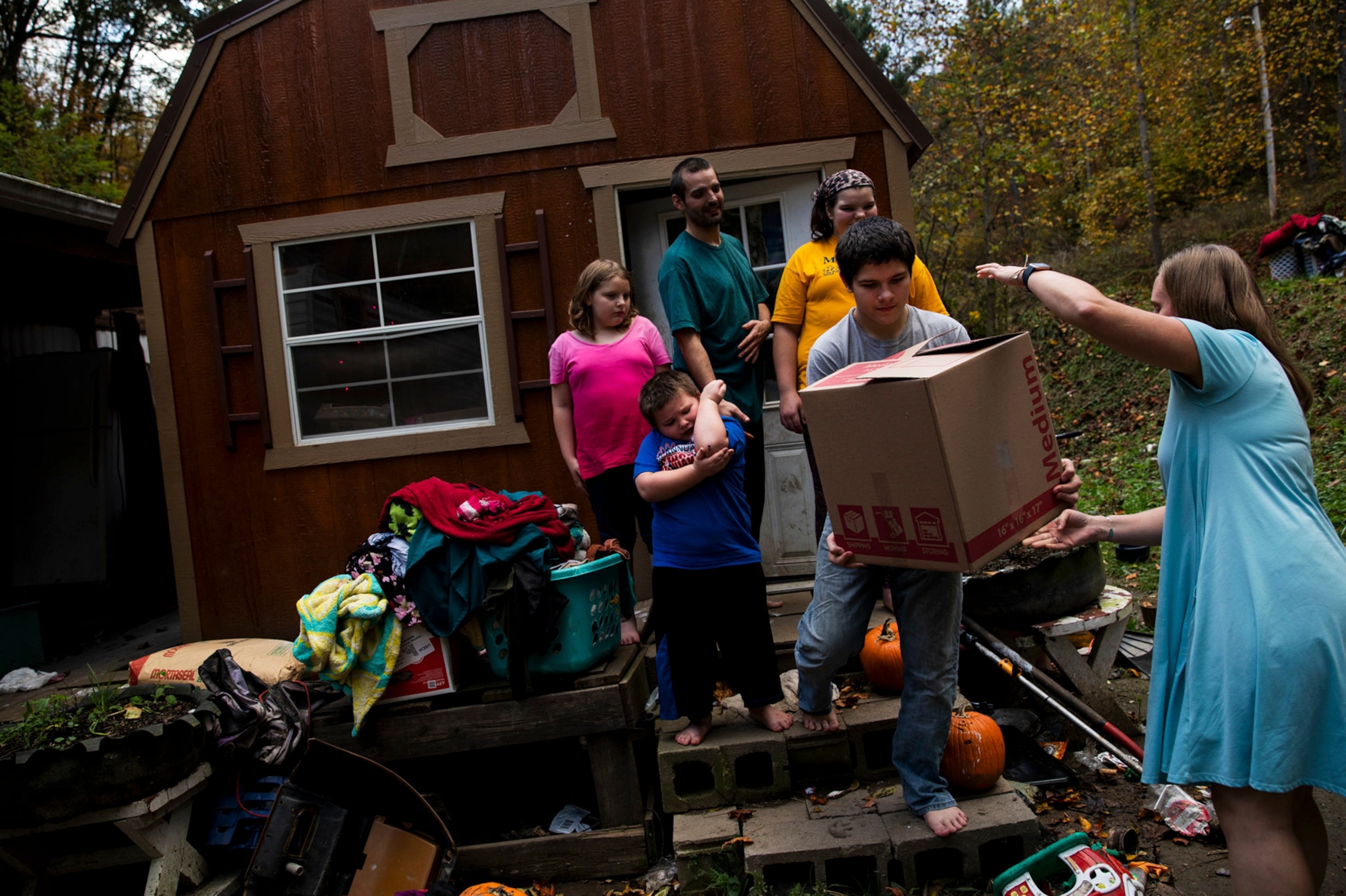
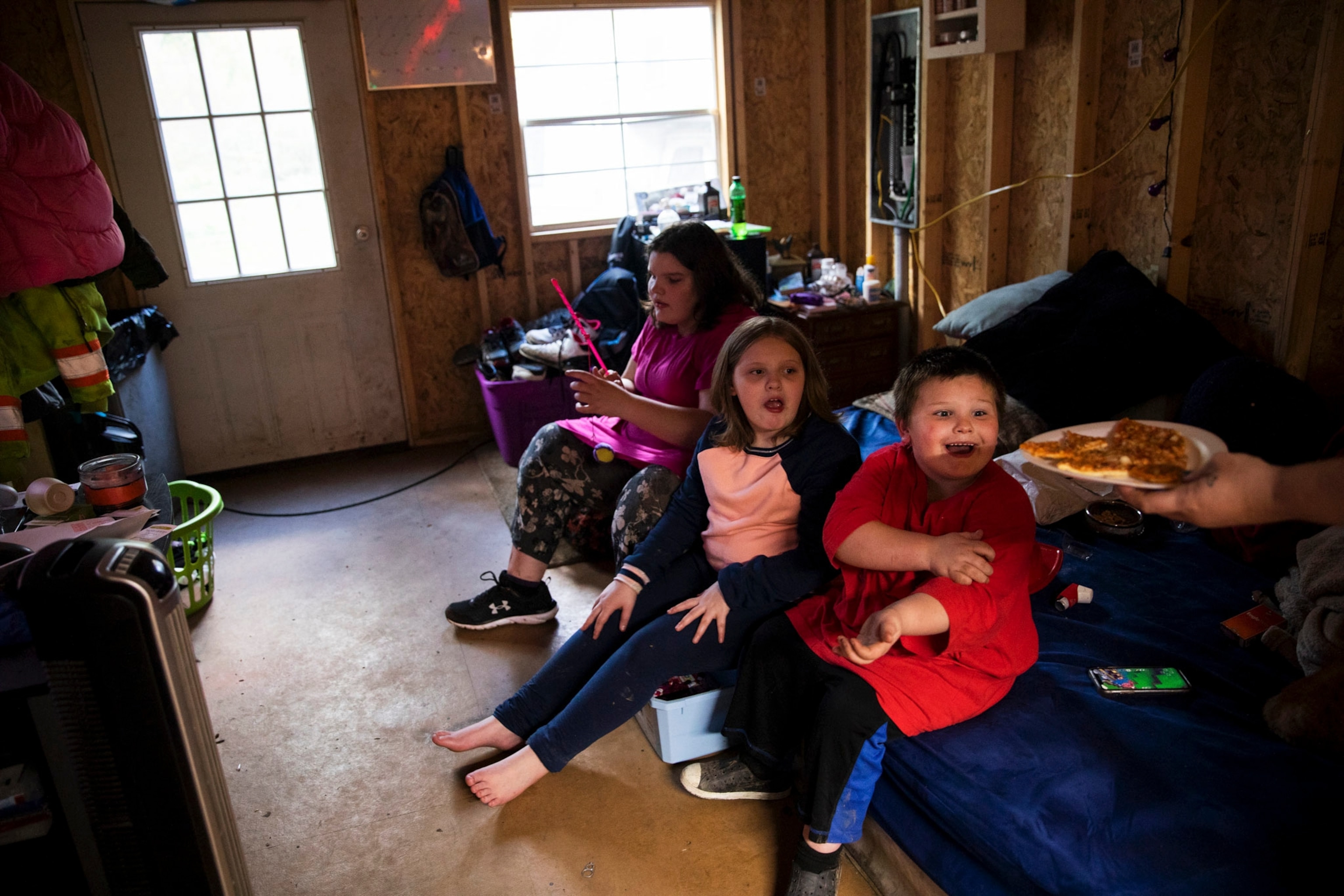
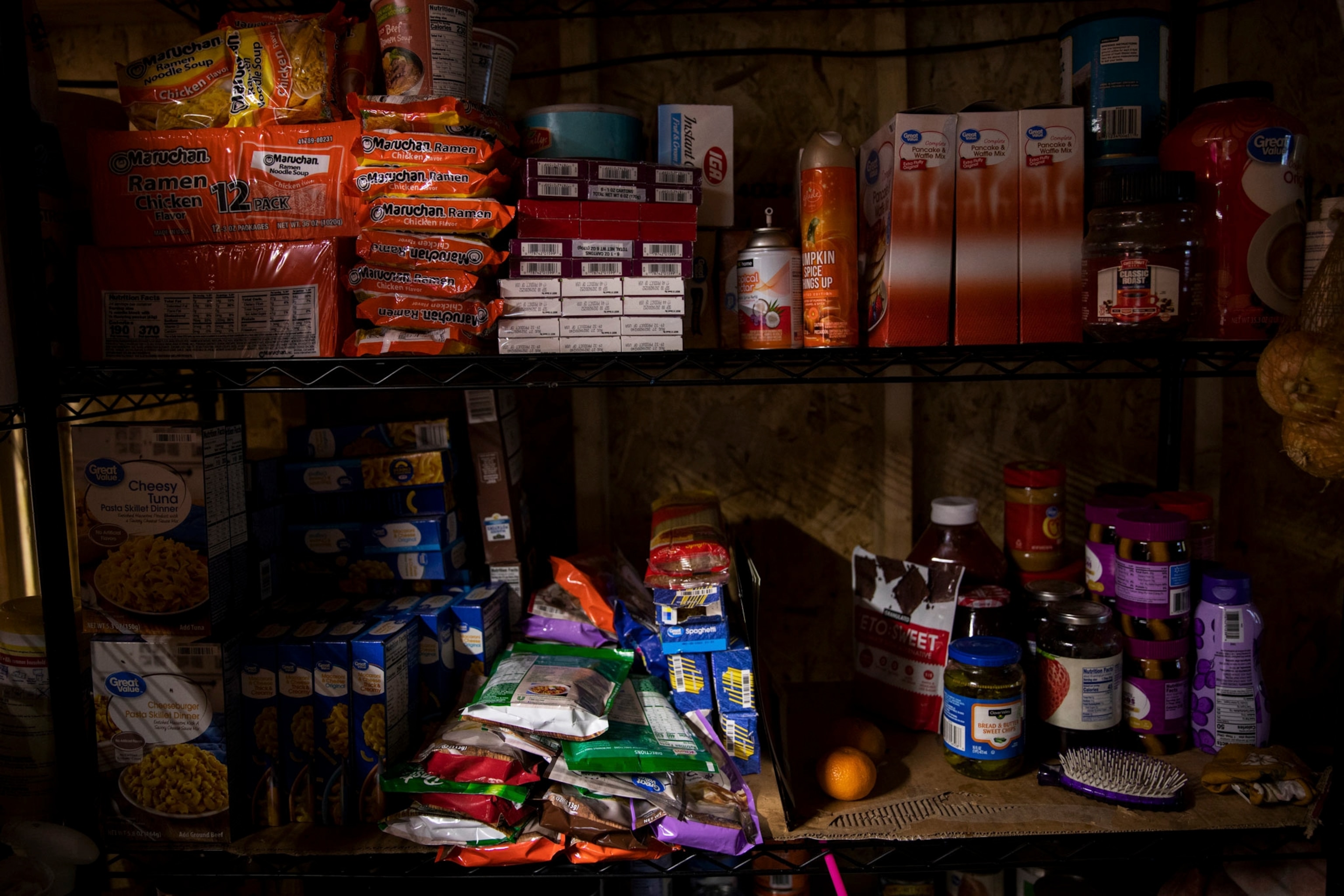
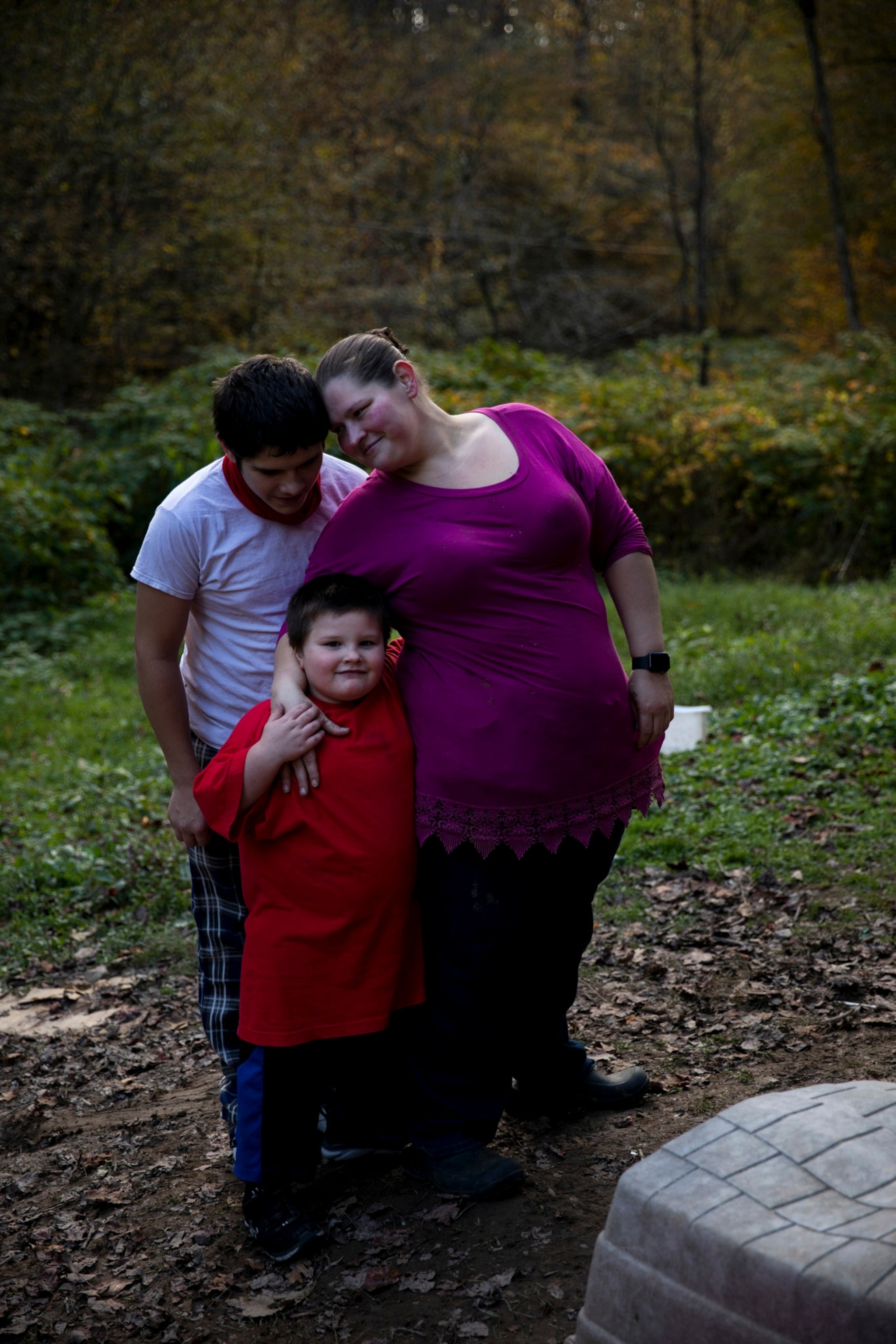
"I'm not like some savior," Osburn says later as she loads a food box into her Subaru Outback, preparing for another delivery—this time to a brother and sister she has been helping for five years since she counseled them in school. "Please, please don't portray me like that.”
In some ways, this next delivery is more neighborly than anything else. Osburn lives along the same road—she’s at the beginning, they’re at the end. She drove the brother to college in Pennsylvania a couple years back, but he didn’t last long. Now he comes out to give her the bad news: he lost another job. His older sister, her three-year-old son next to her, accepts the food with gracious resignation.
Osburn has learned that some of her students, even if they finish high school and go to college, may not know how to keep a job, or know what kind of help to ask for if they run into trouble. They need a different kind of education, she says—more practical. “I think you should have to work to make things better for yourself,” she says. “But I just don't think that people can work if they're not educated. And they can't get educated if they're hungry all the time."
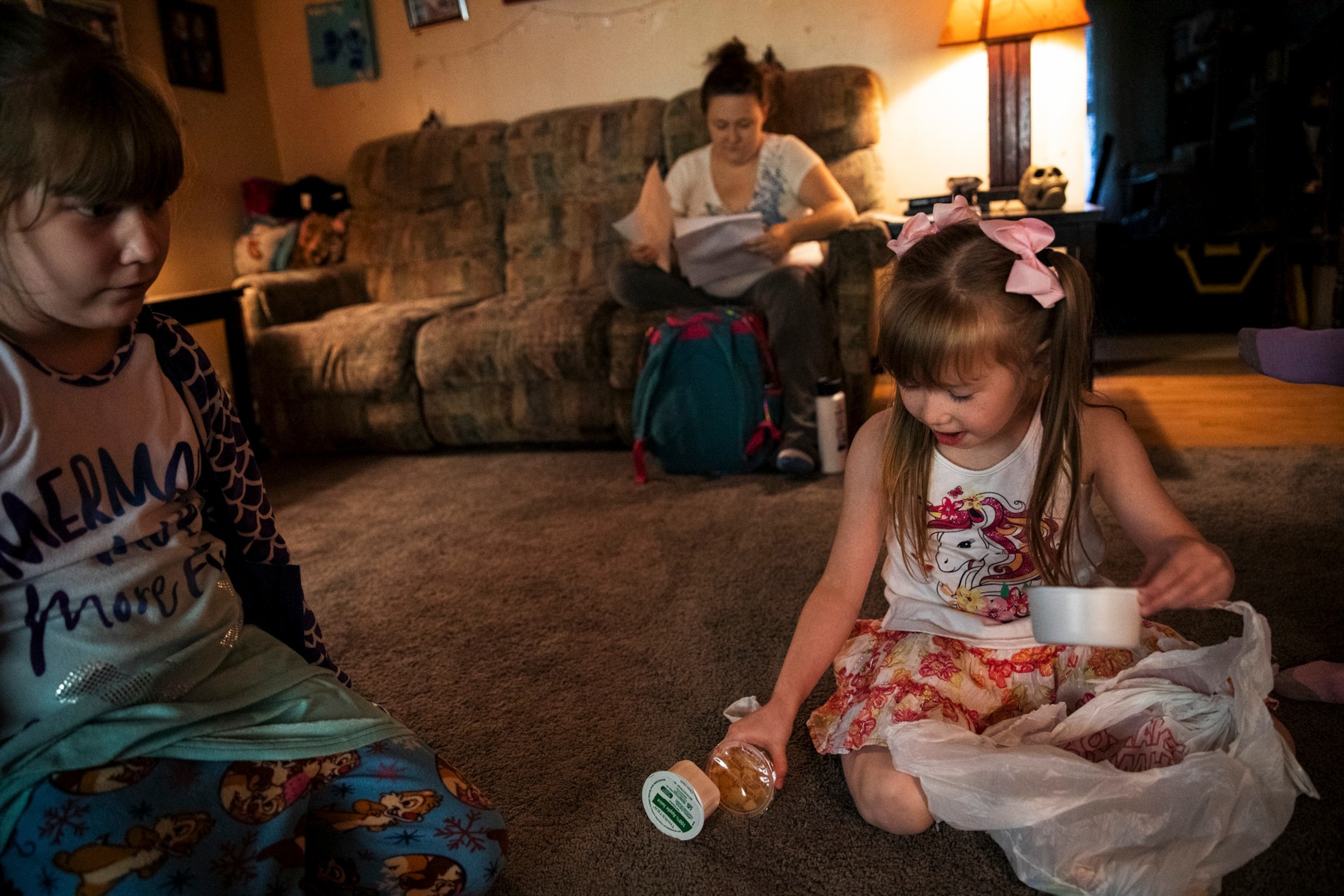

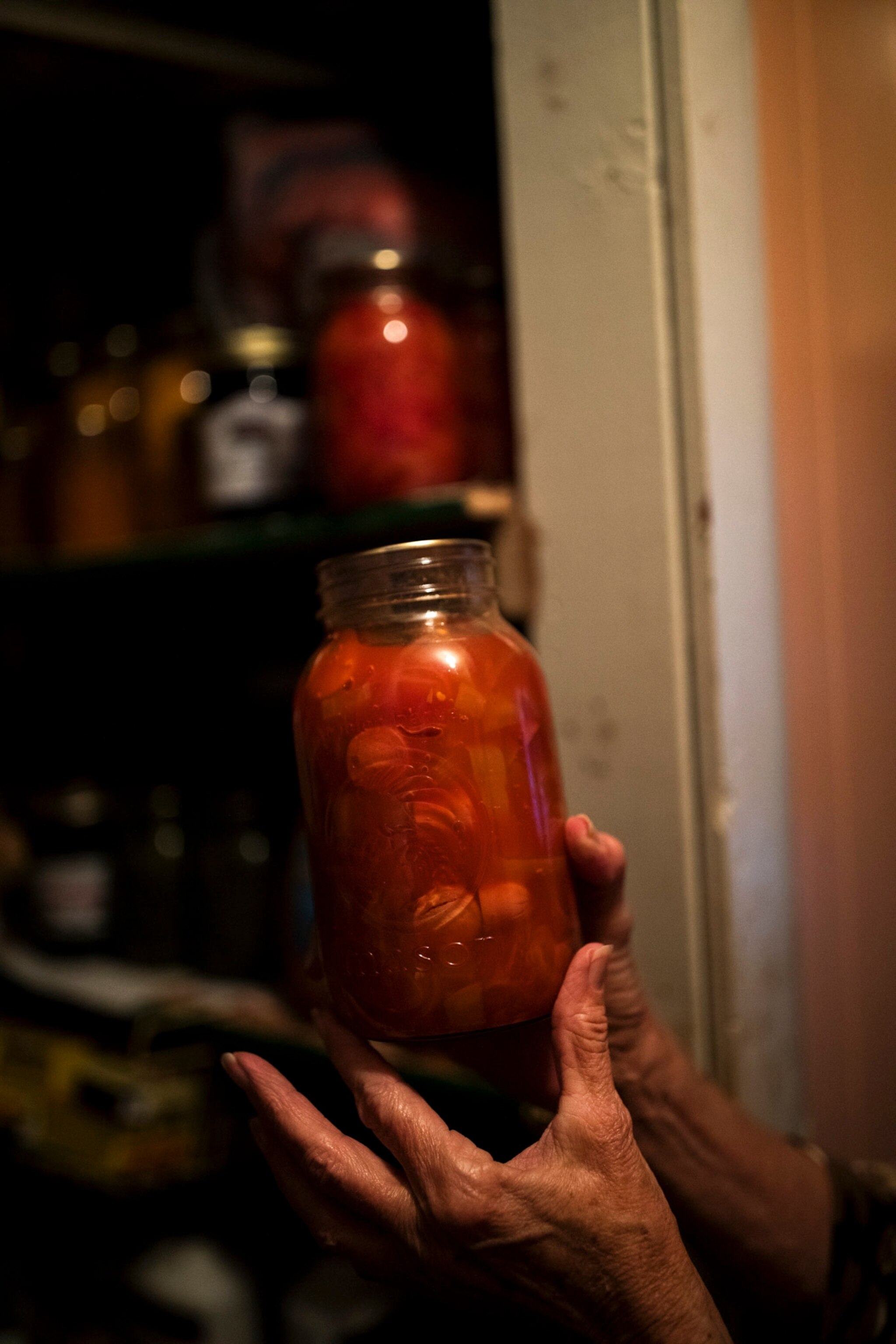
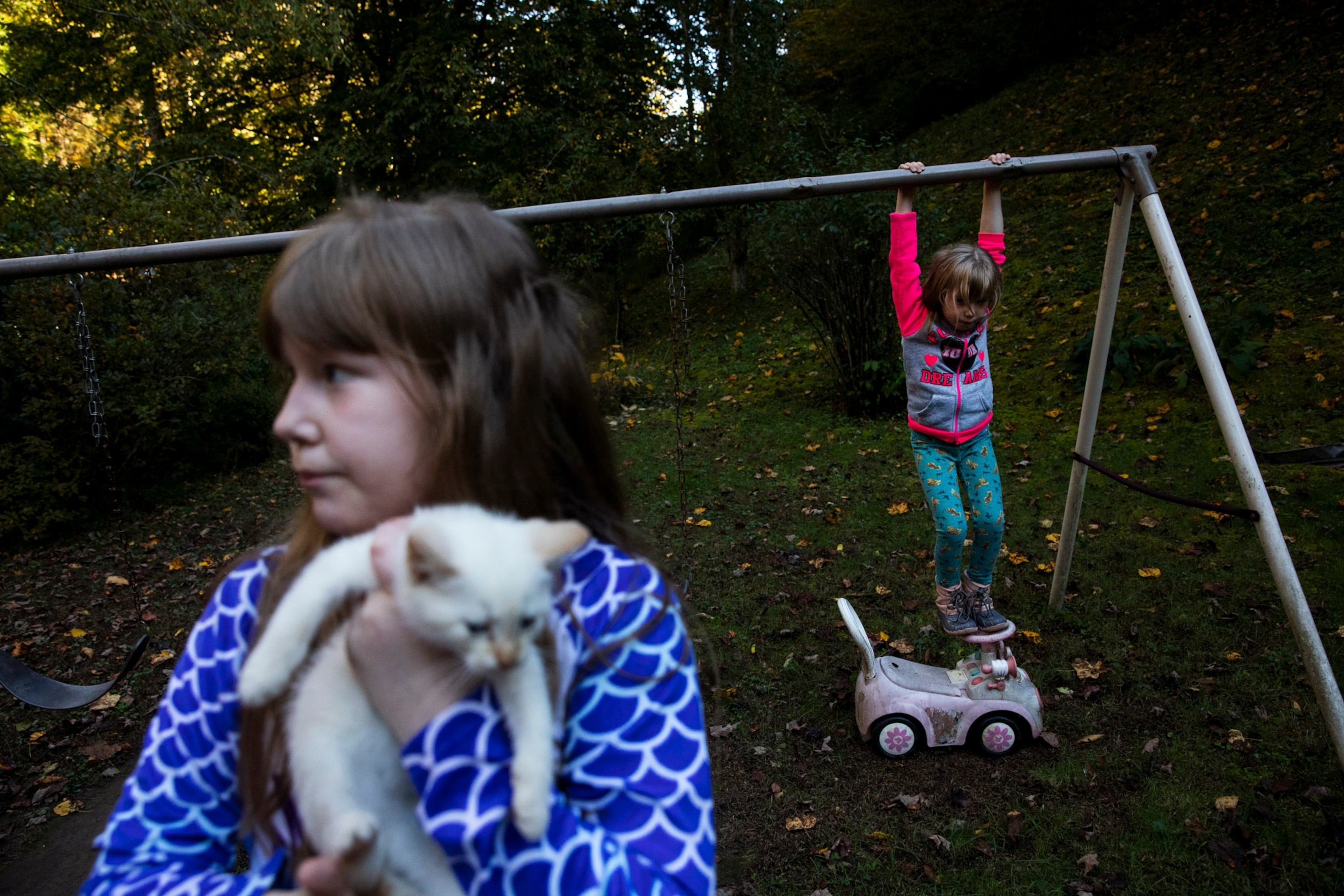
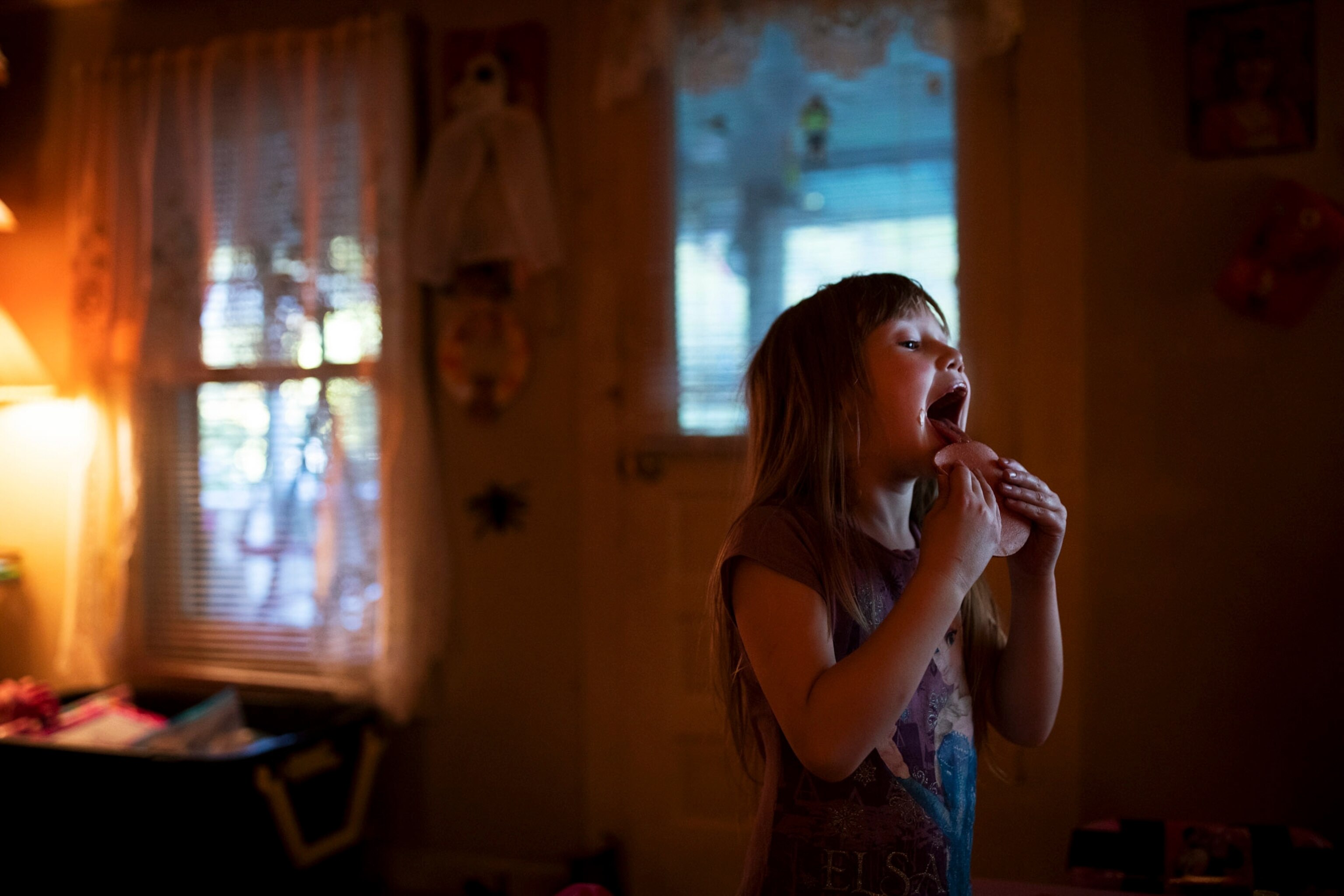
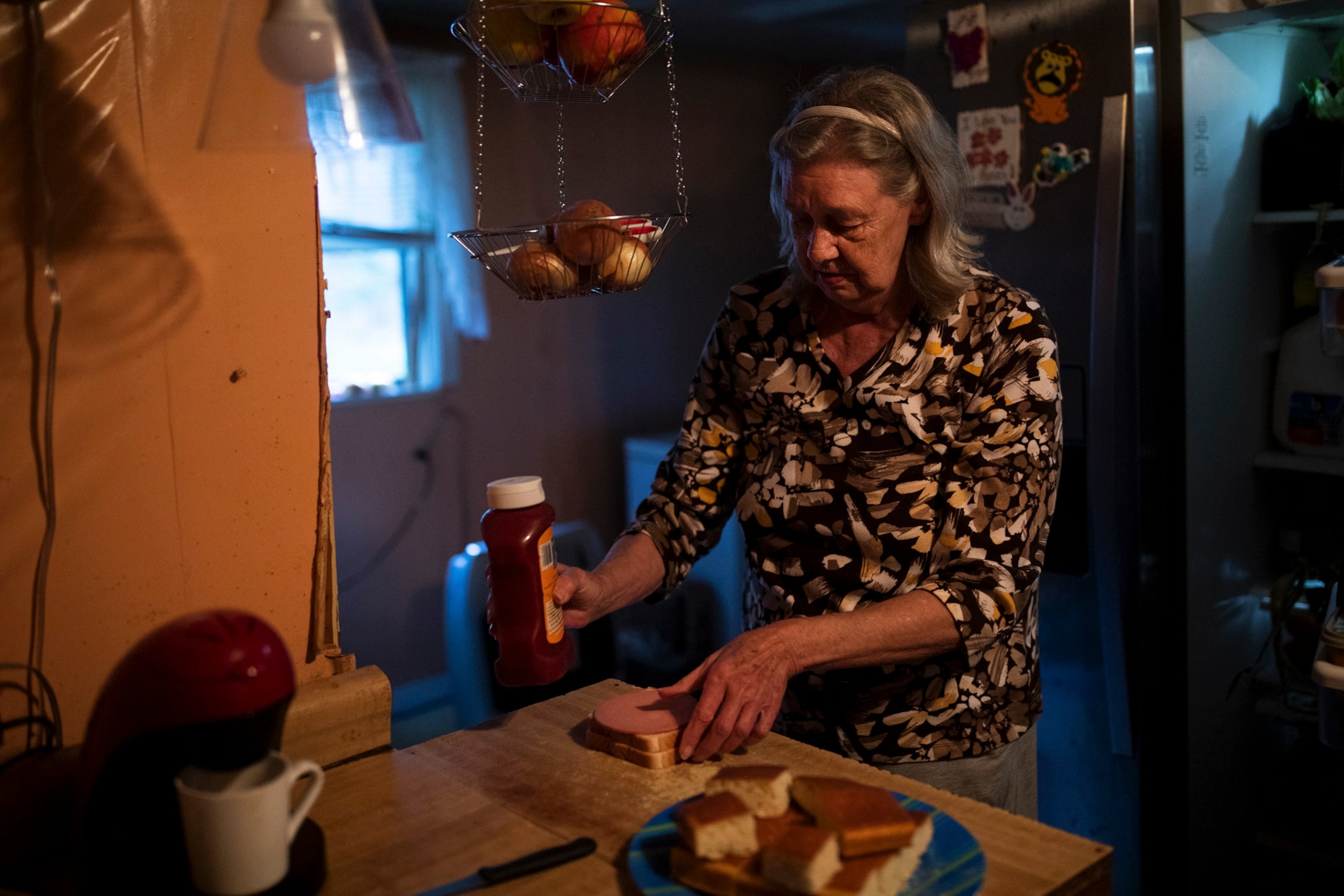

A hundred miles west of Clay, in the coal mining town of Dunlow, the sun creeps over the mountains, shining on a line of cars that has been forming since 2:45 this morning in front of the Cabwaylingo Presbyterian Church. Now there are nearly a hundred, some battered, one without a hood. By the end of the day, the fire department, which has its headquarters next to the church, will have to jump three cars and leave one, unable to start, in brush by the side of the road.
Next to the fire department headquarters are the office building and two warehouses of the Dunlow Community Center. Next to those is the house of Bill and Addie Likens, who run the church, the community center, and—every fourth Thursday of every month—the food bank.
Today is going to be a big day, Bill says, watching volunteers stack boxes of food. Typically, about 300 families would come through the main warehouse on these days, and the Likenses would give each about 50 pounds of food. But since the beginning of the pandemic, the food bank has been serving around 750 families 150 pounds of food each big day. "I've had people knocking on my door at one o'clock at night asking for food," Bill says. "At seven o'clock in the morning, too."
Bill knows there are food banks all over the United States facing similar desperation, but it frustrates him that his community’s hardships are often overlooked when compared to those of people in richer cities and areas. It’s as if people expect to see poverty Appalachia. “They put it on national news: two-mile lines for the food bank in Los Angeles,” says Bill, laughing. “Well, we’ve got that every month here in little old Dunlow.”
It's not even 9:30, and Bill turns his gaze towards the line of cars, now nearly a mile long. The food bank isn't supposed to open until 11 but people are hungry. "Everyone's ready!" he yells, and Roy Moller, a disabled Army veteran who has been waiting for seven hours in his Ford F-150, his grandson in the backseat, pulls up to Addie, who is taking attendance. She beams. "Good morning, Roy!" she says. "How's Candy?"
Back home, Roy and his wife, Candy, have more than a dozen children, teenaged grandchildren, and friends to feed. Roy drove to the grocery store yesterday (the closest is more than half an hour away, in Kentucky) and spent $400, but it won’t last long. "I need all the help I can get," he says.
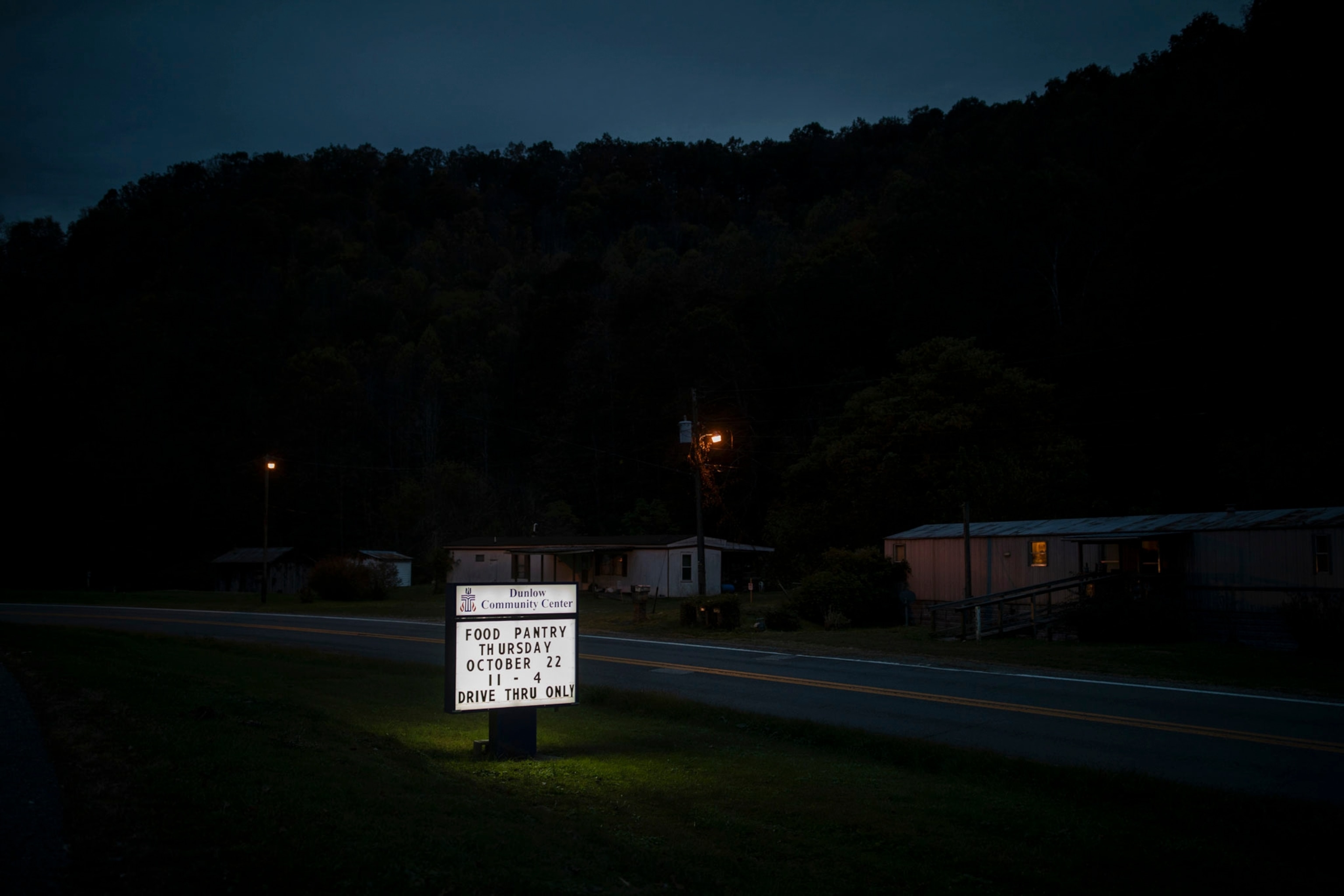

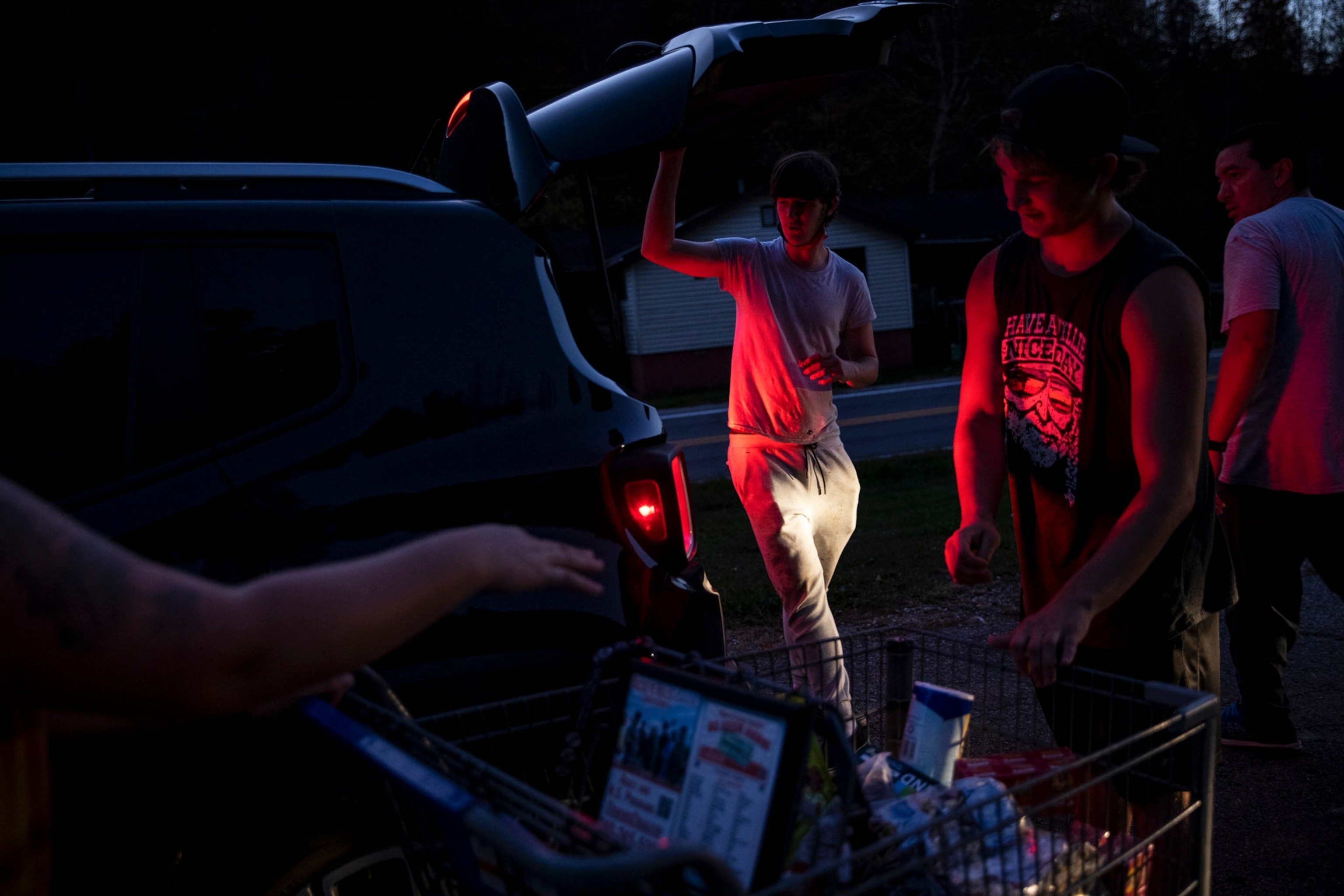

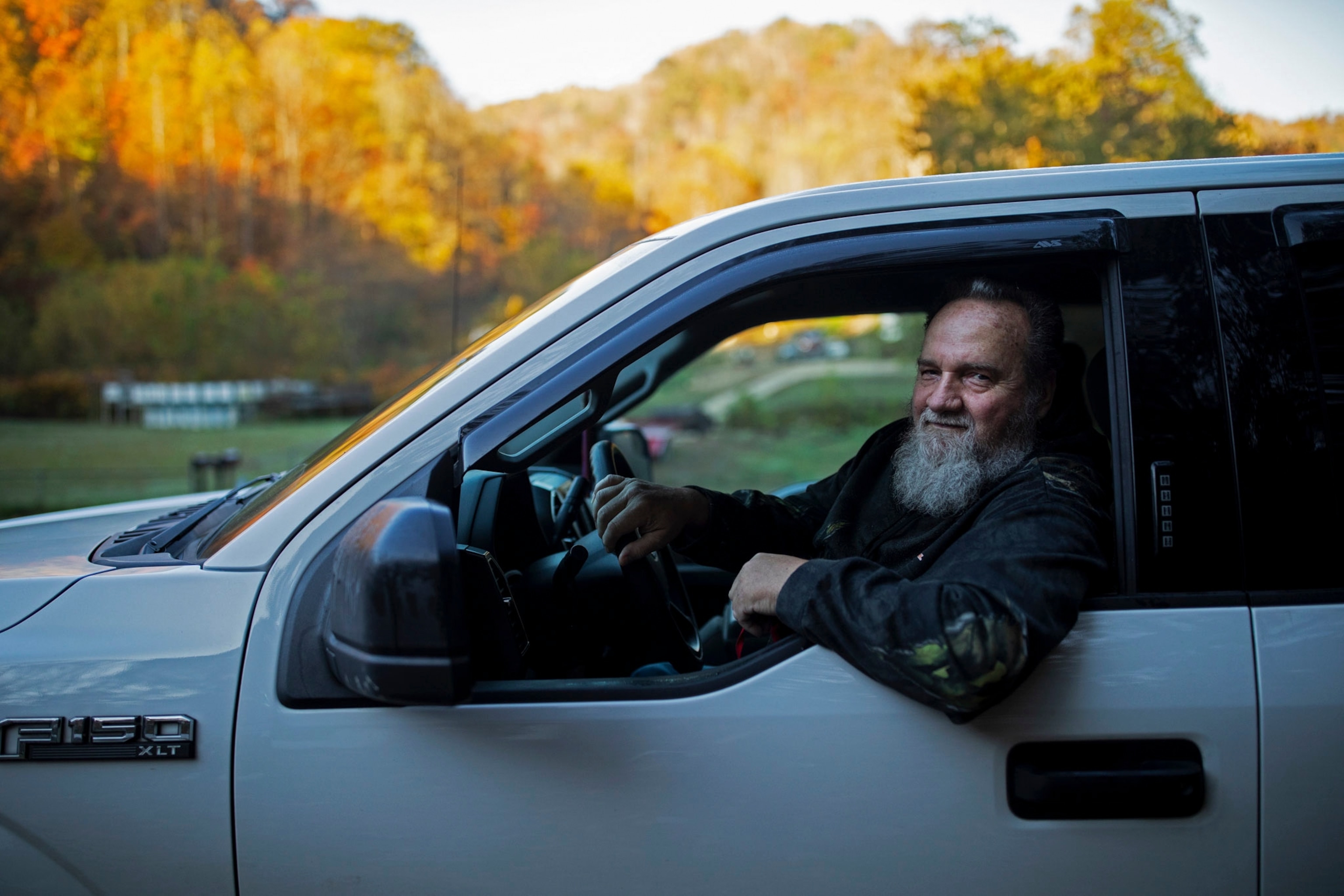
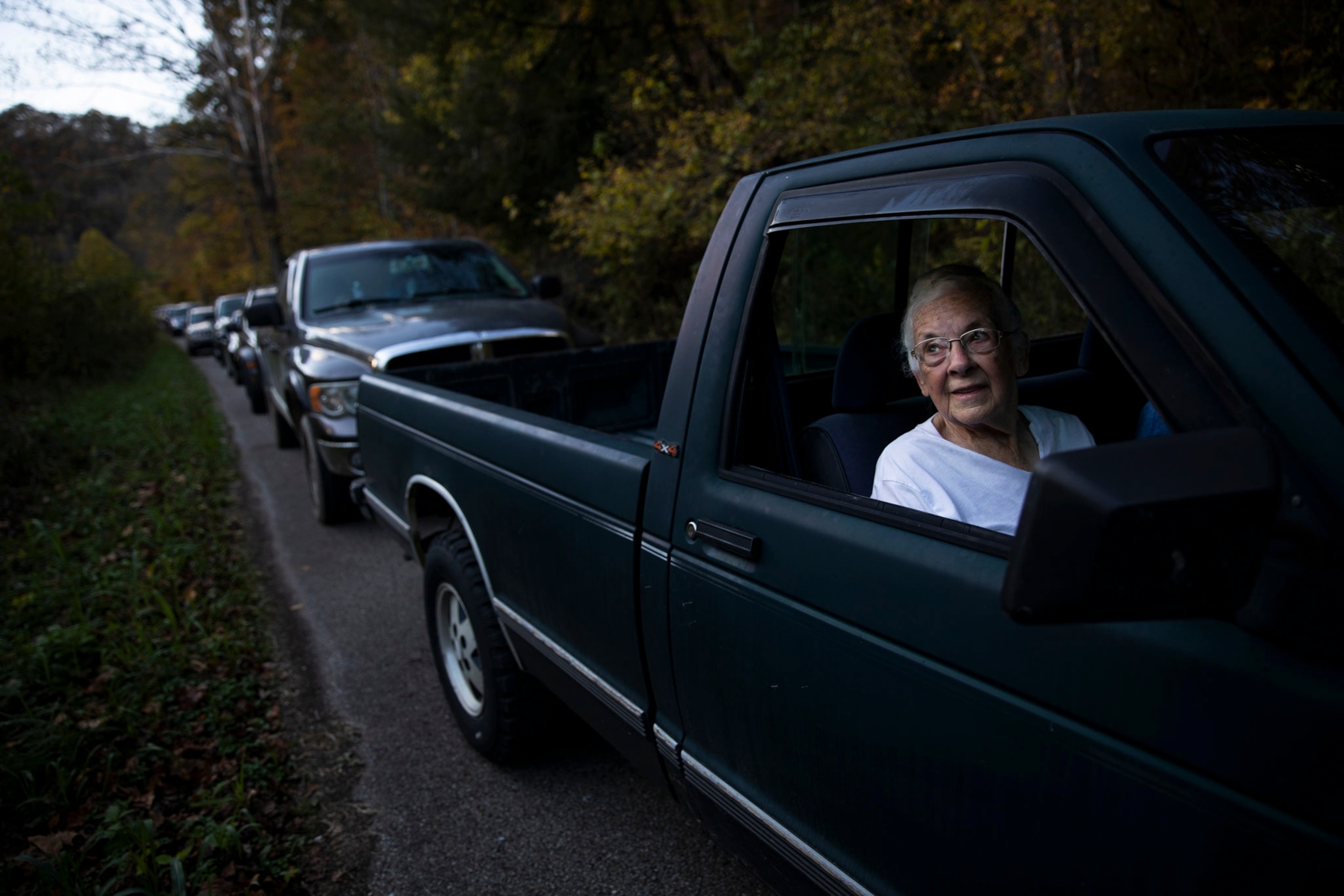
Ninety cars behind Roy is a red sedan carrying two firefighters, Andy Garland and Robert Cook, from a nearby town whose food pantry has been shut down multiple times as volunteers—most of them elderly—are kept away by the pandemic. Cook and Garland are picking up food for three families and a couple of older neighbors who couldn't make the drive. Behind them is Linda Alexander, who dropped off her daughter and three grandchildren at the community center early that morning to volunteer, then immediately turned around to join the growing queue. After waiting five hours, she will drive home with the groceries and then back to the center to help her daughter distribute food. (Amid a hunger crisis, Houston struggles to keep food on people’s tables.)
The 115th car in line is a worn red-and-black pickup, driven by Michael Stapleton, his small son squirming on the seat next to him. Stapleton, a mechanic who opened a small repair shop a couple years ago, says he was getting "all sorts of business"—but then the pandemic came, putting people out of work, and "everything just sort of fell through." He had to close the garage and started taking odd jobs. "Before I heard about this," he says, pointing up the line of cars, "I was just doing whatever I could to put dinner on the table."
By the time the final car—an ambulance, driven by Willard Marcum—pulls up to Addie, the sky is a deep purple, dotted with faint pinpricks of stars. Bill turns on the headlights of his forklift, illuminating what remains after tens of thousands of pounds of food have been given out—crushed potato chips, plastic bottles, empty bags.
Marcum, an EMT laid off from his coal mining job back in March, works 90-hour weeks to pay his bills, and today he is picking up food for his wife and seven grandchildren, as well as elderly neighbors who don't have cars. He leans out his window to greet Addie. "You're lucky number seven hundred and twenty five," she says, laughing.
"If it weren't for Billy and them," Marcum says, "some people wouldn't eat all week."
It takes about a week for the ice to melt in Jen and Chris Lively’s home. Jen's mother, Jo Davis, drives down from Ohio, and brings deer meat, which will have to be eaten fast to avoid spoiling.
In the afternoon, Jen fries a tenderloin on her wood stove. As soon as it’s done, Brian fills a metal bowl and starts eating, quickly. With no means of keeping things cold, most of their SNAP benefits get spent on food in packages and cans, so anything fresh is rare: fruit, vegetables, meat. Fresh meat is a delicacy in the Lively household.
Here on this plateau, the big complications invoked by "food insecurity"—shuttering groceries, disappearing jobs, bad roads, expensive vehicles, the global pandemic—reduce sometimes to the simplest question: What do we have to eat today? Jen doesn’t always have an answer. Every new burden seems to make it a little more elusive and forces her to rely more on government and nonprofit programs, and on people like Amanda Shelton. "Makes you feel like you're worthless because you can't do it yourself," Jen says. "And doing it so many years, it makes you angry. Makes you not want to be here on Earth."
Still, the Livelys sometimes spend evenings crowded in their living room, next to the recharged car battery, talking about the future. Brian plans join the Army once he gets his diploma; the stability of longterm Army life appeals to him. "I'm going to make a career out of this,” he says. Alex is thinking about becoming an EMT—or a drummer, maybe; even during the pandemic, he has played bass drum in the high school marching band. Jen imagines living off the land like the wilderness adventurers she watches on YouTube, beholden to no one for anything.
Later that day Shelton reappears at the Livelys’ door. They’ve eaten, the sun is still out, and it’s the middle of the month, so they have food stamps left. Shelton hands off two food boxes for Brian and Alex—the normal—and then opens the trunk. Soon it will be winter. Brian will need to chop more wood to stay warm at night. Jen and Chris will have to scavenge enough food to avoid going hungry. Normally, they can make it, but this year…
Shelton takes a crate of oranges and apples out of her trunk and hands it to Brian. Not part of the official program, but a church had some left over. "This is going above and beyond today," she says. "Don't you tell a soul."
Then she picks up a couple of Sprite and Dr. Pepper cans from a cooler. "And look what I have," she says. "You like cold drinks?"
"I'm going to come over there and give you a hug," Brian says, and he does.



